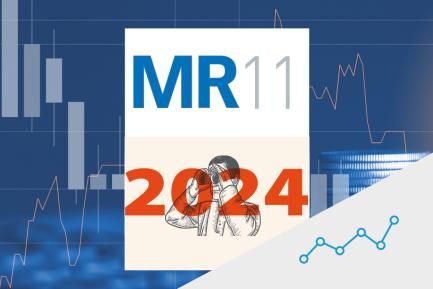The resilience of the financial markets in 2021

As was the case for much of the year, in December investors kept a close eye on developments relating to the two hot topics: the pandemic and inflation. On the one hand, the relative lower severity of the Omicron variant, despite its rapid spread around the world, alleviated some of the fears of its impact on the economic recovery. On the other hand, the heightened inflationary pressures in almost all countries accelerated the repositioning of the central banks. In advanced economies, details of the withdrawal of the monetary stimulus were discussed, while in emerging economies official rate hikes became widespread (see the Focus on «Emerging Markets monetary policy: tough times ahead» in this same Monthly Report). In this environment, investors, while still behaving with a certain degree of caution, overcame the uncertainty of the previous month and increased their preference for risk-bearing assets. Thus, the financial markets concluded the year showing signs of the resilience acquired after the outbreak of the pandemic, with widespread gains registered in the main advanced-economy stock markets and in cyclical commodity prices, as well as in the yields of higher rated debt.

In the long-awaited last FOMC meeting of the year, the Fed settled investors’ doubts and outlined the key aspects of its medium-term roadmap. With a more hawkish tone than usual, the entity ceased describing the current high inflation as transitory and admitted the error of its initial estimates. Moreover, in view of the strength of economic activity growth, it predicted that full employment could be achieved in 2022. Under these assumptions, the monetary authority decided to keep the reference interest rate in the 0.00%-0.25% range, and made two important announcements for investors. Specifically, it announced that beginning in January it will accelerate the rate of tapering (asset purchases will be reduced at a rate of 30 billion per month) and that it will bring forward the end of net asset purchases to March. Also, the dot plot reflected how most members of the Committee would now advocate three rate hikes in 2022 (at CaixaBank Research we expected two), followed by three more in 2023, raising the average official rate to the 1.50%-1.75% range. The Fed’s less accommodative stance favoured an upward shift in the US yield curve, with the 10-year treasury yield climbing to around 1.50% (a cumulative increase of +60 bps in the year to date).

Like in the US, the steady recovery of the euro area economy and the persistence of inflationary pressures enabled the ECB to announce its plan to reduce net asset purchases in 2022, albeit with a far less aggressive target than the Fed’s. In particular, it anticipated a reduction in the rate of purchases under the PEPP (probably to 50 billion euros per month) in Q1 2022, with the programme coming to an end by the end of March. Meanwhile, it plans to increase net purchases under the APP in Q2 and Q3 to 40 and 30 billion euros, respectively, bringing them back down to 20 billion in October. All in all, the ECB’s balance sheet would be expanded by 480 billion euros in 2022, representing less than half of the volume of assets acquired in 2021. On inflation, Christine Lagarde noted that it will remain high during the first half of 2022, before stabilising below 2% in 2023 and 2024. It also kept its forward guidance unchanged, which would place the first rate hike at the end of 2023. Despite such statements, the rally in the euro area’s CPI in December and the increase in inflationary pressures led some investors to expect a possible rise in deposit rates at the end of 2022, which pushed up the sovereign yield curves in Germany and the periphery.

Following the notable decline in November, the price of a barrel of Brent recovered to 78 dollars in December and amassed a 50% appreciation in the year as a whole. The publication of reports that allayed fears over the economic damage of Omicron, the decline in crude oil inventories in the US, and opposition from OPEC and its allies to modifying their production plans despite demands from several world powers provided support for the rise in the price per barrel in the final month of the year. In the currency markets, meanwhile, the strength of the US economy, coupled with the measures announced by the Fed, provided continued support for the strength of the dollar against other currencies. The euro ended the year at its lowest value in 17 months (–6.9% against the dollar). Emerging currencies also saw their depreciation accentuate in Q4, particularly in the case of the Turkish lira, which fell more than 30% against the dollar in the same period.

The relative improvement in investor sentiment provided a boost to the major equity indices in December, ending the month with widespread gains as well as culminating a year of significant growth. Neither the inflationary pressures, nor the record level of infections driven by the Omicron variant, nor the announcements of monetary stimulus withdrawal prevented the S&P 500 (at record highs) and the EuroStoxx50 (+26.9% and +21.0% in the year, respectively) from registering their third best annual earnings of this century in 2021. The good performance of the technology, energy and financial sectors, as well as better than expected corporate earnings, were the main catalysts for the stock market rally in the closing stages of the year. The signs were less encouraging in the case of the emerging-market indices (MSCI Emerging Markets, –4.6% in the year), which were held back by the slower pace of recovery after the pandemic and the interference of idiosyncratic risks.




